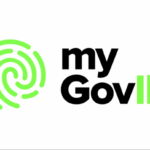NSW Court Registry Data Breach Threatens to Further Erode Confidence in Justice System

A major breach of the New South Wales courts database has raised questions about how and why thousands of documents containing sensitive personal information about defendants, complainants and witnesses have been accessed through what are meant to be secure servers, and whether the material could be or is being used by nefarious actors for other illegal purposes.
The incident has also raised concerns that such a major breach could further erode confidence in the state’s justice system, potentially dissuading potentially vulnerable persons from seeking legal protections.
The incident
It has been reported that a routine security inspection of the Justice Link database last week detected that the account of an employee of the Attorney General’s Department had been breached, enabling access to around 9,000 documents including those not generally accessible to members of the public: such as court attendance notices which detail the allegations against individuals, apprehended violence order files including applications detailing the grounds for complaint and filed statements, and affidavits containing the sensitive personal information of parties as well as witnesses.
The accessed information goes far beyond what is usually available to members of the public and lawyers through the general Online Registry platform, and could potentially be used by nefarious actors to engage in secondary cyber offences, such as attempting to extort money by way of blackmail and even using information to engage in identity fraud.
It could at the same time further erode confidence in a justice system that has already been subjected to widespread criticism in recent years, and even potentially deter those who are in fear for their safety from applying for protective measures such as AVOs or speaking out about being victimised.
The response
Upon being made aware of the breach, the Department of Communities and Justice made the entire Online Registry unavailable for users – citing ‘scheduled maintenance’ as the reason.
The incident is currently being investigated in a joint initiative led by the New South Police Force’s cybercrime squad, who are seeking to ascertain a number of matters including whether any of the accessed information has been downloaded, whether it is being sold or otherwise used on internet or dark web platforms, and indeed who is responsible for the breach and how it occurred.
New South Wales attorney general, Michael Daley, has recognised the potential consequences of the leak for those in respect of which court records exist, emphasising the need for a united front while investigations take place.
Is cybercrime a growing threat?
Cybercrime, a rapidly escalating threat that has emerged in recent years, is not a distant concern. It is a present danger that targets government agencies, businesses, and individuals, seeking to exploit their sensitive information. The world must adapt to this evolving threat, as criminals have transitioned from the physical realm to the digital, targeting our most valuable asset—our data.
No one, no country is immune. Cybercrime is not a localized issue; it affects individuals, multinational corporations, and large-scale government branches. The imperative to enhance cybersecurity measures is not just a matter of protecting data, but of safeguarding entire populations and economies from the ever-evolving tactics of cyber criminals.
Many companies, individuals, and businesses may not immediately think of cybercrime as the main threat to their well-being, but that would be overlooking just how much technology has influenced our world today. Cybersecurity and cybercrime are the future—and the future is upon us.
Cybercrime is a growing threat that targets businesses of all sizes and purposes, meaning no one is safe when protecting their data, information, and customers’ private details. Growing trends online in the cyber world include deep fake scams, business email compromise, and social engineering.
Deepfake scams involve creating AI-generated videos that are incredibly realistic, tricking the viewer into thinking that they are talking to a real person or watching an actual video. Business Email Compromise scams target companies’ email marketing lists to provide real-time feedback and hold conversations with individuals to obtain information. Lastly, social engineering provides cyber criminals with necessary information about a user’s trends by collecting information from a user’s calendar, social media pages, and conversations. Hence, they know exactly where someone is at all times.
Cybercriminals can use these tactics, and many others, to trick businesses into providing sensitive information to thieves. Since cybercriminals have had such success in recent years, the threat of cybercrime is only increasing—not decreasing.
In 2024 alone, data breaches cost businesses an average of almost $5 million. In 2022, 39% of UK businesses were the victims of a cyber attack. Even more concerning, 76% of respondents in Australia, New Zealand, the United States, Canada, and the United Kingdom reported at least one cyber attack at their organisation within 2022.
But, businesses are still not equipped to protect themselves against the sophisticated nature of these high-tech scams. 67% of SMBs feel that they do not have the necessary skills to protect against data breaches, allowing criminals to continue their phishing, scamming, and other illegal efforts.
Cybercrime in Australia and the World
Cybercrime in Australia is similar to that in the rest of the world—it is a growing concern ramping up in severity. Since cybercriminals have had such prolific success, the number of cyberattacks will continually increase, meaning the need for the government, businesses, and individuals to boost their security is at an all-time high.
In 2023, cyber leaders, businesses, and governments all recognised the importance of addressing the growing concerns of cybercrime. The World Economic Forum’s Global Cybersecurity Outlook showed that 93% of cyber leaders and 86% of business leaders thought that political instability would certainly lead to a large-scale, detrimental cyber event within the next two years.
After multiple cyberattacks in 2023, including the MOVEit data theft and Royal Mail’s ransomware attack, countries around the world recognised they were not immune to cybertheft—and Australia was one of them.
In just 2024, Australians lost almost $320 million to cyber scams, with investment, romance and dating, and phishing scams being the most common types of scams targeting individuals. There were more than 47 million data breaches in 2024, with Australia being the 11th-most affected country in the world—one Australian account was hacked every second.
Abigail Bradshaw, the director-general of the Australian Cyber Security Hotline, noted that the increase in 12% of cybercrime in the 2023-2024 year coincided with the changing geopolitical landscape and war/conflict overseas. She mentioned a shift in the nation’s cybersecurity learning towards stronger defences, which continued to increase as ‘geo-strategic tensions change’.
2025 Cybercrime Trends to Watch Out For
Cybercrime is getting increasingly sophisticated as criminals discover what works and what doesn’t. In 2025, there are specific predictions of what will become the ‘norm’ for criminal behaviour to provide businesses with trends to ‘look out for’:
- Pig butchering — ‘Pig Butchering’ is a malicious act that involves targeting vulnerable people, romancing them, and persuading victims to invest their money into a fake site.
- Misinformation campaign — Criminals will create an authentic social media message, perpetuate false narratives, and malign individuals.
- AI model web scraping — ‘Scrapers’ can pull data from any website.
- AI software engineers — AI will contribute to data collection, evading current security measures, deepfakes, data poisoning, and model stealing.
- Improved scalability — AI provides enhanced capabilities that cybercriminals can use to increase attacks’ speed, scale, and personalisation, including responding to multiple people with personalised messages simultaneously.
- Supply chain attacks — An attacker can target a cybersecurity seller and add code that sends malware to the seller’s clients, granting the hacker access to the client’s information and systems.
Preventative Measures
So, what can the country do to prevent cyber attacks from happening at an alarming rate in 2025?
- Identifying cryptography — Businesses must identify where their organisation uses cryptography, such as in information storage, databases, and libraries.
- Rely on Artificial Intelligence—Although AI can get a bad wrap in certain instances, businesses should use it to identify and flag abnormal behaviour and perceive threats. Creating a multi-layered defence strategy can help reduce a company’s attack surface.
- Identity Management — Corporations must improve the fundamentals of their cybersecurity, including personnel management, automated threat response, policy-based automation, and monitoring real-time analytics.
- Increase regulations to adhere to global compliance—Lastly, companies need to maintain or boost their regulations to adhere to global compliance, especially regarding privacy and infrastructure.






